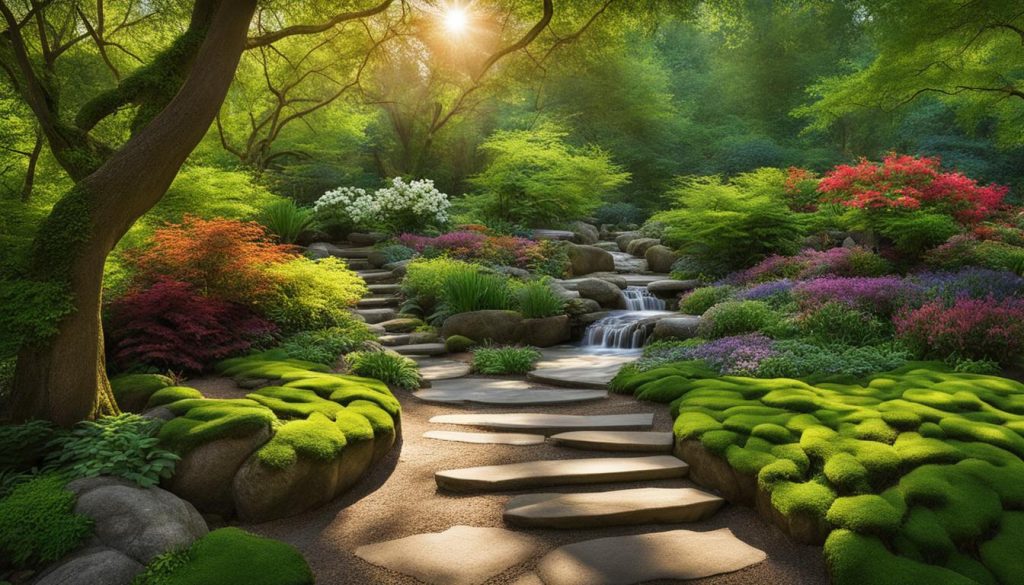Welcome to our informative guide on landscaping ideas specifically designed for shade-drenched spaces in Canadian backyards. Are you tired of struggling to find landscaping ideas that work in your shady area? Do you want to create a green oasis despite minimal sunlight? Look no further! Our team has researched and compiled a list of creative and practical landscaping ideas to transform your shaded space into a beautiful and functional outdoor retreat.
With our expertise in shady area landscaping, we understand the unique challenges and opportunities that come with these environments. From assessing the shade levels to selecting the right plants and designing functional outdoor spaces, we cover it all. Plus, we have practical tips for long-term success to help you maintain your shady oasis.
Whether you want to create a peaceful seating area, add decorative elements, or enhance the ambiance with creative lighting, we have got you covered. Join us on this journey to beautifying shadows and making the most out of your shady area. Let’s get started!
Assessing Shady Areas: Understanding the Challenges and Opportunities
Before we dive into the best landscaping ideas for shady areas, it’s important to understand the unique challenges and opportunities that come with these spaces. Assessing your shady area enables you to choose the right plants and design features to create a beautiful and functional outdoor retreat.
The Importance of Assessing Shade Levels
The first step in assessing shady areas is understanding the levels of shade. Shade levels can range from partial shade, where sunlight is limited to a few hours a day, to full shade, where sunlight is blocked completely by trees or structures. Understanding the amount of shade in your area is important because it determines the types of plants that will thrive and the design features that will work best.
For example, full shade areas require plants that are specifically adapted to low-light conditions, while partial shade areas may support a wider range of plant species. Additionally, full shade areas may require more creative lighting solutions, while partial shade areas may benefit from the natural sunlight that filters through the trees.
Challenges and Opportunities of Shady Areas
Shady areas present both challenges and opportunities for landscaping. On the one hand, the lack of sunlight can make it difficult for plants to grow and thrive. Shady areas also tend to be cooler and more humid, which can lead to issues with pests and diseases. On the other hand, shaded areas can be transformed into serene retreats, providing relief from the heat and adding an element of tranquility to your outdoor living space.
When designing for a shady area, it’s essential to focus on the strengths of the space and maximize opportunities for growth and beauty. For example, shaded areas are ideal for plants that prefer cooler temperatures and retain moisture, such as ferns, hostas, and astilbes. Shaded areas are also perfect for creating intimate outdoor seating areas that promote relaxation and comfort.
The Role of Soil Moisture and Drainage
Soil moisture and drainage are also important factors to consider when assessing shady areas. Shaded areas tend to retain more moisture than areas that receive more sunlight, which can lead to waterlogging and root rot. Therefore, it’s important to choose plants that can tolerate moist soil conditions and to implement proper drainage solutions such as raised beds or French drains.
Assessing soil conditions can also help determine the right fertilizers and other soil amendments to use for optimal plant growth. Additionally, proper irrigation and watering practices are essential to maintaining healthy plants in shady areas.
In Summary
Assessing shady areas is a crucial first step in creating a beautiful and functional outdoor space. Understanding the level of shade, the challenges and opportunities, and soil moisture and drainage is essential for choosing the right plants and designing the right features. By taking the time to assess your shady area, you can create a thriving and visually appealing outdoor retreat.
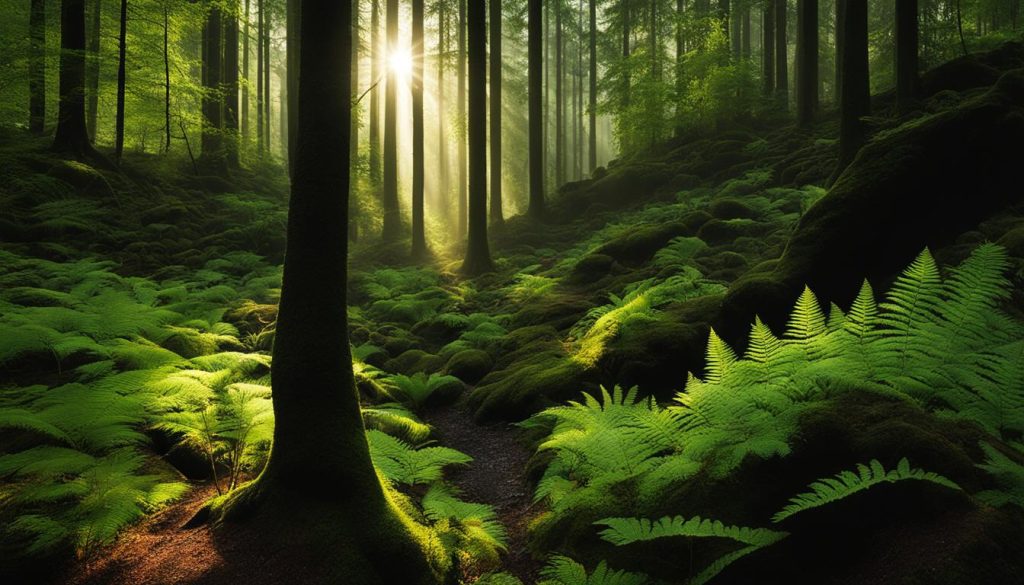
Shady-Friendly Plant Selection: Thriving in Low-Light Conditions
When it comes to selecting plants for shady areas, it’s crucial to pick those that can thrive in low-light conditions. Here are some plant options that are perfect for your shade-drenched spaces:
| Plant | Amount of Shade | Notes |
|---|---|---|
| Hosta | Part shade to full shade | Variegated varieties can add visual interest |
| Astilbe | Part shade to full shade | Produces feathery plumes of flowers in shades of pink, red, and white |
| Begonia | Part shade to full shade | Comes in a range of colors and types including tuberous, fibrous, and rhizomatous |
| Impatiens | Part shade to full shade | Produces brightly colored flowers in shades of pink, red, purple, and white |
| Ferns | Part shade to full shade | Comes in a variety of textures and sizes, including maidenhair and Boston ferns |
| Japanese Forest Grass | Part shade to full shade | Has golden or variegated foliage that adds interest to any garden |
While these plants can thrive in low-light conditions, it’s important to note that they still need some light to grow. Be sure to choose the right plants for the amount of shade your specific area receives.
Another tip for selecting plants for shady areas is to look for varieties that have darker or lighter foliage. Darker leaves can absorb more light, while lighter leaves can reflect it. This can help brighten up your shaded garden.
Remember to also choose plants that are suited to Canadian climates. Some plants may be more tolerant to colder temperatures than others.
Next, we will discuss how to design a functional outdoor space in your shady area.
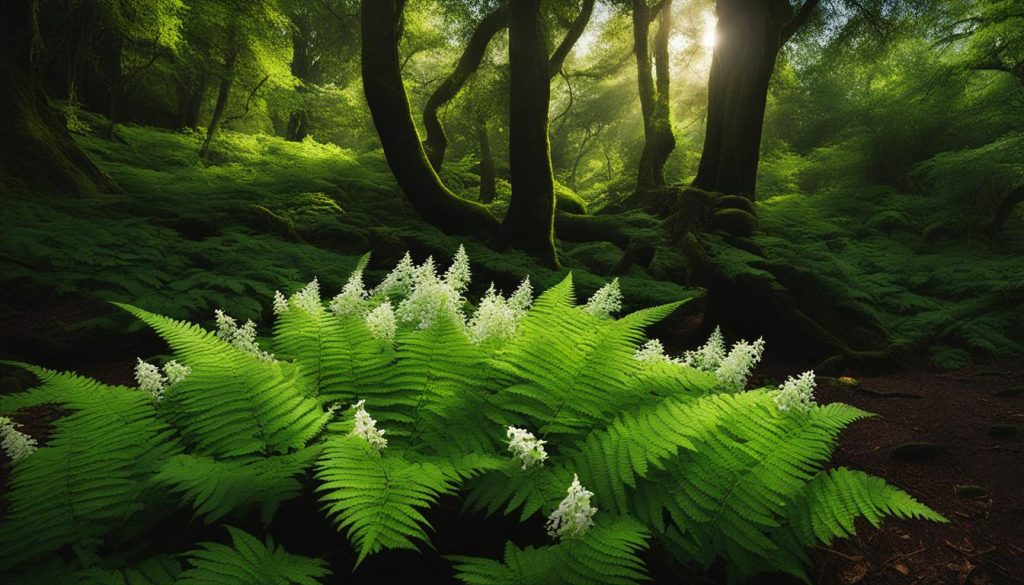
Designing a Shady Retreat: Creating Functional Outdoor Spaces
When it comes to landscaping your shady area, it’s important to consider both form and function. By strategically designing your outdoor space, you can create a shady retreat that is both beautiful and functional.
Seating Areas
Designing a comfortable seating area is key to creating a functional shady retreat. Consider incorporating features such as outdoor sofas, chairs, and tables positioned to maximize the shade. You can also add a pergola or a canopy to provide shade and shelter from the sun while enjoying the outdoors. To make your seating area even more inviting, add outdoor cushions, pillows, and blankets for a cozy touch.
Walkways
Adding walkways to your shady retreat not only provides functional accessibility but also adds visual interest. Use stepping stones, natural stone, or even wooden boards to create a path that leads through the shaded area. You can also consider adding lighting along the walkway to create a welcoming ambiance.
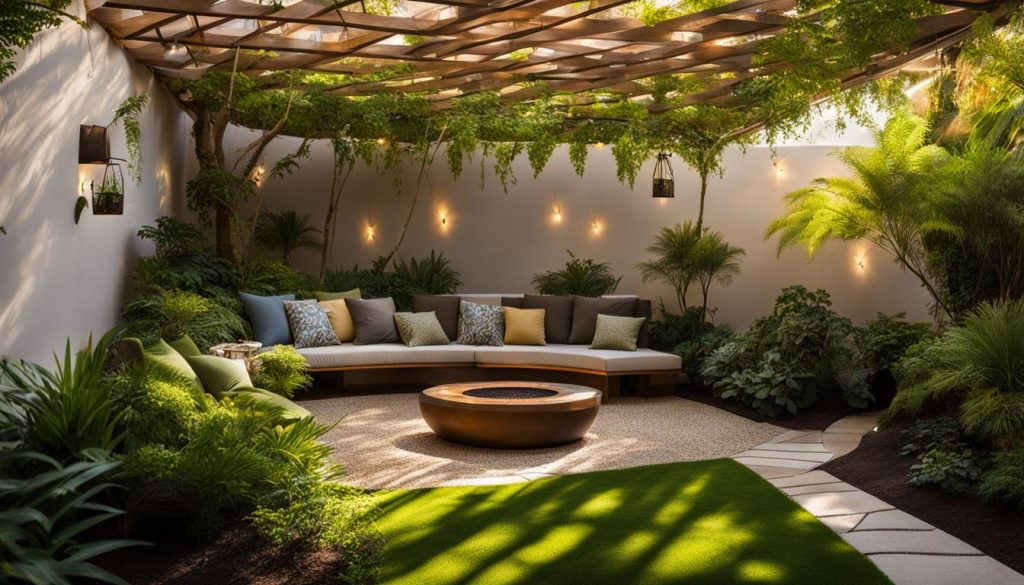
Decks and Patios
Creating a deck or patio in your shady area provides a perfect spot for outdoor dining, entertaining, or relaxation. Choose materials that are durable and slip-resistant, like wood or composite decking. You can also consider incorporating built-in seating, planters, or even a fire pit to enhance the functionality of your shaded outdoor space.
Water Features
Adding a water feature, such as a small fountain or pond, can provide a calming and soothing atmosphere to your shady retreat. Water can also help to cool down a shaded area, making it more comfortable during hot summer days. Consider incorporating aquatic plants to enhance the natural ambiance of your space.
Trellises and Arbors
Trellises and arbors are not only functional but also add a beautiful architectural element to your shady area. They can support climbing plants such as vines or roses, adding texture and color to your garden. You can also use them as a focal point or an entrance to a particular section of your shaded outdoor space.
By incorporating these landscaping ideas, you can create a beautiful and functional shady retreat that you can enjoy all year round. Designing a shady area that maximizes the shade while providing a comfortable atmosphere is key to creating an outdoor space that you’ll love spending time in.
Enhancing Shady Areas: Creative Lighting and Decorative Elements
Adding the right lighting and decorative elements can transform a shady area from a dull corner to a stunning outdoor haven. In this section, we will explore creative ideas to enhance the ambiance and beauty of your shade-drenched space.
Creative Lighting Solutions for Shady Areas
Good lighting is essential to create a warm and inviting atmosphere in shady areas. Here are some creative lighting solutions to make your shady area visually appealing even during nighttime:
- Hang string lights or lanterns from tree branches or pergolas for a whimsical touch.
- Install LED lights along walkways or under benches to add subtle illumination.
- Use solar-powered lights to save energy and reduce your carbon footprint.
Remember to choose lights that are weather-resistant and suitable for outdoor use.
Decorative Elements for Shady Areas
Decorative elements can add personality and charm to your shady area. Here are some ideas to get you started:
| Decorative Element | Benefits |
|---|---|
| Water feature | Creates a soothing and tranquil atmosphere |
| Sculpture | Adds a focal point and artistic touch |
| Trellis | Provides a support structure for climbing plants and adds height to your garden |
Choose decorative elements that complement your landscaping design and personal style.
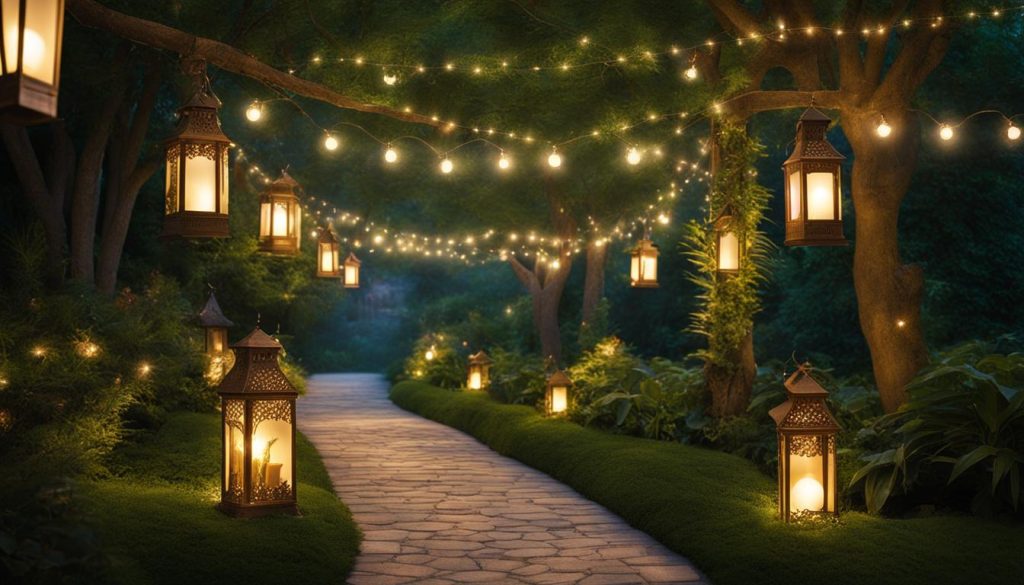
Enhancing your shady area with creative lighting and decorative elements is an easy way to add character and charm to your outdoor space. Try out these ideas and transform your shady oasis into a cozy retreat that you can enjoy day and night.
Maintaining Shady Landscapes: Practical Tips for Long-Term Success
Proper maintenance is crucial for the long-term success of your shady landscape. Here are some practical tips to ensure the health and vitality of your plants in the shade:
Watering routines
Water your plants deeply and infrequently, instead of shallowly and frequently. This encourages the roots to grow deeper and establish a stronger foundation. Keep in mind that overwatering can lead to root rot, so make sure the soil has drained properly before watering again. Using organic mulch around your plants can also help to retain moisture in the soil.
Soil management
Shade-drenched spaces often have compacted soil, which can hinder plant growth. Loosen the soil with a garden fork or tiller to improve drainage and allow air circulation. Incorporating organic matter such as compost or aged manure can also improve soil structure and provide essential nutrients for your plants.
Pruning
Regular pruning is essential to maintain the shape and size of your plants, especially in shady areas where they may grow unevenly. Remove any dead, diseased, or damaged branches, and thin out overcrowded growth to improve air circulation and sunlight penetration. Make sure to use clean, sharp pruning tools to avoid damaging the plants.
Pest control
Shady areas can be more prone to pest and disease problems, so it’s important to keep an eye out for any signs of plant damage or infestation. Use natural pest control methods such as neem oil, insecticidal soap, or companion planting to deter pests and protect your plants. Regularly inspect your plants for any issues and address them promptly.
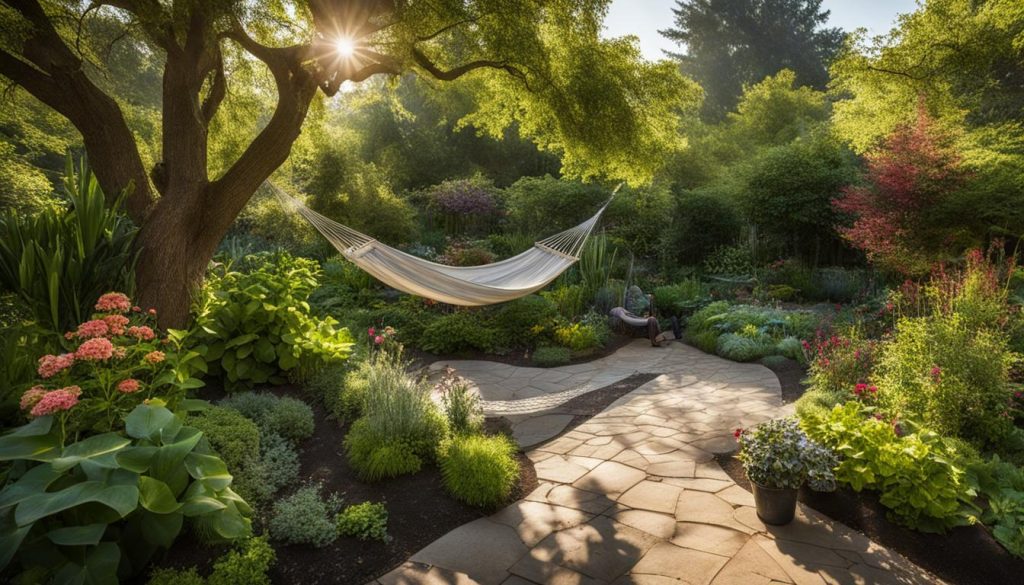
By following these practical tips, you can ensure the long-term health and success of your shady landscape. Remember to assess your shaded area, choose shade-tolerant plants, design functional outdoor spaces, and add creative lighting and decorative elements to create a beautiful and inviting oasis in your own backyard.
Expert Consultation and Landscaping Services: Transform Your Shady Area
If you’re feeling overwhelmed by the prospect of designing and maintaining a beautiful shady area, fear not. Our team at Landscaping Vaughan is here to provide expert consultation and landscaping services that will transform your shaded space into a stunning oasis.
Expert Consultation
Our team of landscaping experts has years of experience in designing and maintaining beautiful outdoor spaces, including shady areas. We offer personalized consultations to assess your specific needs and create a customized plan that suits your budget, preferences, and lifestyle. We will work closely with you to ensure that every aspect of your design takes into account the unique challenges and opportunities of your shady area, from plant selection to lighting and décor.
Landscaping Services
Our comprehensive range of landscaping services includes everything you need to create and maintain a beautiful shady area, from initial design and planning to ongoing maintenance and care. Our services include:
- Plant selection and installation
- Hardscaping, including walkways, patios, and decks
- Lighting design and installation
- Water feature installation, including ponds and waterfalls
- Mulching, fertilizing, and weed control
- Pruning, trimming, and deadheading
- Pest and disease control
Our team is committed to providing high-quality, personalized service that meets your unique needs and exceeds your expectations. We take pride in our attention to detail and our commitment to ensuring your complete satisfaction with every project we undertake.
Shady Area Transformation
Whether you’re looking to create a cozy seating area or a lush garden oasis, we can help you transform your shady area into a functional and beautiful outdoor space. With our expert consultation and customized design services, we can create a plan that suits your needs and budget, while maximizing the unique opportunities offered by your shaded space.
Contact Landscaping Vaughan today at (647) 812-8594 to schedule a consultation and take the first step towards transforming your shady area into your dream outdoor space.
FAQ
What are some landscaping ideas for shady areas?
Some landscaping ideas for shady areas include planting shade-tolerant flowers and shrubs, creating seating areas and walkways, incorporating decorative elements like sculptures and water features, and utilizing creative lighting solutions.
How do I assess the challenges and opportunities of shady areas?
Assessing shady areas involves understanding the varying levels of shade, their impact on plant growth and soil moisture, and the overall landscaping design. By assessing these factors, you can determine the best approach to optimize your shady space.
What plants thrive in low-light conditions?
Some plants that thrive in low-light conditions include shade-tolerant flowers like impatiens and hostas, groundcovers like ajuga and vinca, and shade-loving shrubs like hydrangeas and ferns.
How can I design a functional outdoor space in a shady area?
To design a functional outdoor space in a shady area, consider incorporating seating areas, walkways, and decks that optimize the shade while providing a comfortable and inviting atmosphere. Use furniture and decor that complements the natural surroundings.
What are some creative lighting and decorative elements for shady areas?
Some creative lighting solutions for shady areas include using solar-powered lights, string lights, and spotlights to create a warm ambiance. Decorative elements such as sculptures, water features, and trellises can also enhance the beauty of shady areas.
How do I maintain a shady landscape?
Maintaining a shady landscape involves establishing a proper watering routine, managing the soil moisture, pruning appropriately to maintain plant health, and implementing pest control measures specific to shady areas.
Can I get expert consultation and landscaping services for my shady area?
Yes! Our team at Landscaping Vaughan offers expert consultation and landscaping services specifically tailored for shady areas. Contact us at (647) 812-8594 to discuss your landscaping needs and transform your shady area into a beautiful oasis.

